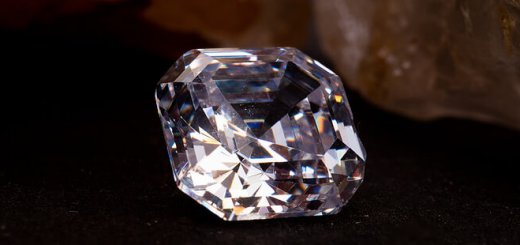It’s the Easter holidays! That means three things: no school, no work (hopefully), and tooth-destroying amounts of chocolate. Most of it from chocolate eggs.
Actual birds’ eggs (the ones that give you salmonella instead of cavities) are as varied in appearance as their parents. From an emu’s enormous egg that could feed an entire Aboriginal tribe to a peregrine falcon’s eggs, which are coloured like the surface of Mars.
What point is there in laying colourful eggs if they’re more noticeable to nest predators? That question is a tough egg that ornithologists, including Charles Darwin himself, have been trying to crack open for centuries.
What Colours Do Birds’ Eggs Come In?
A lot of bird species lay eggs that either come in browns, creams, or just plain white; sometimes with darker markings. These colour schemes might seem boring to our eyes, but they help eggs blend in better with dry plant matter. The dry plant matter nests are often made of.
As an example, here are my hands filled with Japanese quail eggs that my college stores inside a fridge:
Most of the time, this camouflage works. Think about it. If you drove around in a black or grey Vauxhall in the UK, no one would bat an eyelid. It would be a very different story if you drove a neon blue Lamborghini. Similar to Lamborghinis, some eggs are eye-catching too.
Those laid by comb-crested jacanas are coloured like caramel and marked with black swirls for camouflage amongst aquatic plants. Swirls that look like they were painted on by Jackson Pollock, or a baboon on cocaine.
Southern cassowaries lay large olive-green eggs that look like olives for a giant.
Others come in various colourations. The eggs of the Common guillemot (AKA the Common murre) come in a wide variety of whites, browns, blues, and even greens. Each egg also has its own unique pattern of markings.
I think it’s entirely possible that Cadbury was inspired to make its first Mini Eggs by the guillemots’ eggs.
Here’s a collection of Common guillemot eggs:
Here’s a cluster of Cadbury’s Mini Eggs:

What Causes the Colours?
The canvas that is a bird’s eggshell is painted with very few paints. Very few.
Every colour and every pattern that’s ever been seen on a bird’s egg stems from two primary sources. They are two pigments: biliverdin and protoporphyrin. Biliverdin causes blue-green colours and protoporphyrin causes brown-red ones.
However much an eggshell has of one pigment and/or the other will determine its colour/s and pattern/s. If a species only uses protoporphyrin and at high concentrations, the eggshell is going to be redder. Such is the case for the speckled warbler, which lays glossy brown-red eggs.
Having eggs that camouflage well with their background makes sense if you actually want them to, you know, survive. Though the mystery of why some species lay such vibrant eggs still hasn’t been solved.
What Are the Current Hypotheses?
For a lot of birds, the colour and patterning of the eggs depend on where they’re laid.
Birds that nest out in the open (e.g. on leaf litter or shorelines) normally lay eggs with darker markings for camouflage. Meanwhile, those that nest inside cavities (e.g. burrows or holes in tree trunks) normally lay pure white ones since they’re already hidden. There are some exceptions, however.
Tinamous nest on the ground and lay eggs so brightly coloured and glossy, you’d think someone had dropped a whole packet of jawbreakers while on a walk. Through a rainforest. As one does. No, instead, a group of chicken-sized birds is what’s responsible.
The eggs that these birds lay come in a rainbow of stunning colours – chocolate brown, green, purple, turquoise, and even wine red – that makes them very visible amongst leaf litter.
In contrast, some birds lay all-white eggs on wide, open terrain rather than inside cavities. Ostriches are an egg-cellent eggs-ample of egg-xactly what I mean. Their eggs aren’t only white, they’re also massive and there are plenty of them. A “communal nest” can have about 60 at any one time.
In the intervening years, more hypotheses have been proposed. Neither of them is perfect as they each have at least a few exceptions and/or inconsistencies.
One of them suggests some bird species lay patterned eggs to distinguish them from those laid by brood parasites such as cuckoos (not the ones you’re thinking). These are species that lay their eggs in other species’ nests to trick (or actively force) them into raising their young.
They were the inspiration for the god-awful 2019 thriller Vivarium.
However, this begs the question, how do birds that lay uni-coloured, non-patterned eggs distinguish theirs from those of a brood parasite?
Also, not all brood parasites lay eggs that even remotely resemble those of their hosts.
Luckily, the robin – unlike the cowbird – is not a complete idiot and tends to recognise and reject cowbird eggs inside its nest. It’s like Taylor Swift and Brendon Urie said, “one of these things is not like the others”.
Another theory suggests the females of some bird species lay brighter-coloured eggs to show their reproductive fitness to their mates. The more colourful the eggs, the fitter the female, and the more bodily resources she can spend to produce higher-quality offspring.
Once again, there are inconsistencies. How do the females of species that lay all-white eggs show their reproductive fitness?
As predicted, darker shades of blue protected the embryo inside from harmful UV waves. However, they also caused the entire egg to absorb much more light and heat up faster. They dubbed this the “dark car effect”.
Have you ever sat inside a black car on a hot summer day and burnt your hands on the steering wheel? It happens to the best of us…even scientists.
There are exceptions to this hypothesis. Emus are native to Australia, yet their eggs are dark blue-green. One would think there’d be no need for the eggs to absorb more sunlight and heat given that they live in Australia. A country where eggs can literally be cooked on the pavement.
What’s My Hypothesis?
My hypothesis does not discount most of the other ones. It could be that egg colour has several reasons to be so dramatic and diverse as it is.
Mine boils down to parents wanting to deposit their genetic material into other nests of their species.
While there is evidence of the colour vibrancy of eggs used to represent the fitness of females, I believe it’s also used to represent that of males. The more vivid the colour/s, the fitter and healthier both of the parents are.
Despite the widespread belief that most bird species are monogamous, the reality is that in a lot of species, parents will cheat on each other if an opportunity arises. What a happy, healthy relationship.
These cheaters will search for nests with brighter-coloured eggs because they act as indicators of the mother’s/father’s gene quality.
When a female bird sees another nest of her species with brighter-coloured eggs, she will see them as a sign of the father’s good genes. On the other hand, when the same happens to a male, he will see them as a sign of the mother’s good genes.
This isn’t to say parents in bird species that lay duller-coloured eggs don’t cheat on each other. Many likely do.
With species that lay eggs that have darker markings, the colour/s are dual-purpose. For instance, bush stone-curlew eggs can be either buff or creamy with dark brown marks.

The general markings can be used for great camouflage; the number and intensity of said markings act as another method of indicating the gene quality of their parents.
With species that lay all-white eggs like the eastern rosella – a type of parrot – the rule remains the same as if the eggs were all-blue. The brighter the better — for the cheaters, anyway.
Speaking of blue, just as the markings of some birds’ eggs have more than one purpose, so does the blue colour of some eggs like the American robin’s. They help protect them from UV radiation (as Lahti and Ardia concluded), as well as signal the quality of their parents’ genes.
Although all this cheating might seem questionable in our minds, it’s actually a good thing. For birds, that is (I can’t say the same for people).
It helps to increase genetic variation within the species. This decreases the chances of inbreeding, according to biology professor Herb Wilson at Colby College. In the end, this is just another way birds try to increase genetic diversity so their offspring won’t become as inbred as the Habsburgs.
The brightness or intensity of egg colour is only the visual stimulus for cheating to occur in the first place. It’s a good thing human beings are never anything like this. Definately not.












